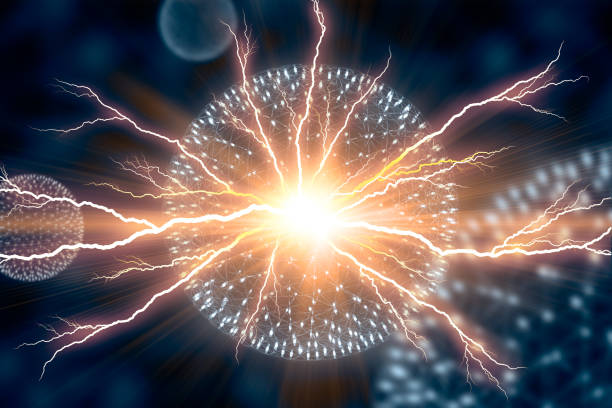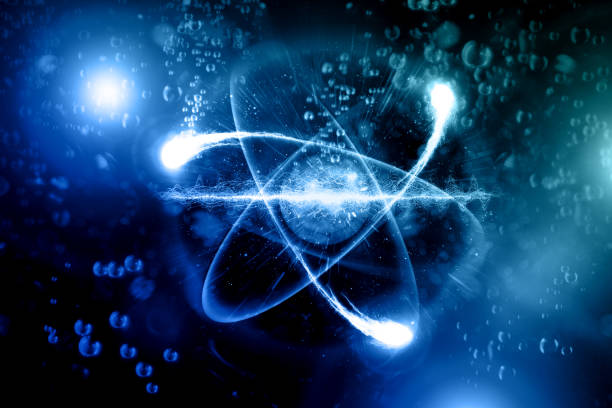Introduction
Fusion reactor power plants, often hailed as the “holy grail” of energy production, represent a monumental leap towards sustainable and virtually limitless energy. Unlike traditional nuclear reactors that rely on fission, fusion reactors mimic the processes powering the sun, merging light atomic nuclei to form heavier ones, releasing vast amounts of energy in the process. This technology promises a cleaner, safer, and more abundant energy future, addressing the escalating demands for power while mitigating environmental concerns.

Historical Development of Fusion Power
Early Concepts and Theories
The concept of nuclear fusion was first theoretically outlined in the early 20th century by scientists like Sir Arthur Eddington, who proposed that stars derive their energy from the fusion of hydrogen into helium. This hypothesis laid the groundwork for understanding stellar energy production and the potential for harnessing similar processes on Earth.
Cold War Era and the Race for Fusion
During the Cold War, both the United States and the Soviet Union invested heavily in nuclear research, including fusion. This era saw the development of the hydrogen bomb, an application of uncontrolled fusion, and the establishment of numerous research facilities dedicated to achieving controlled fusion for power generation.
Milestones in Fusion Research
Significant milestones include the construction of the first tokamak reactors in the 1960s in the Soviet Union, which demonstrated that magnetic confinement could potentially control fusion reactions. The subsequent decades saw incremental advances, with international collaboration becoming increasingly common, exemplified by projects like the Joint European Torus (JET) and the International Thermonuclear Experimental Reactor (ITER).
Technical Specifications of Fusion Reactors
Tokamak Design
The tokamak, a doughnut-shaped device, is the most studied fusion reactor design. It uses powerful magnetic fields to confine a hot plasma, where fusion occurs. Key components include the vacuum vessel, magnetic coils, and plasma-facing materials designed to withstand extreme conditions.
Stellarator Configuration
The stellarator, another fusion reactor design, twists the magnetic fields into more complex shapes, potentially offering improved plasma stability without requiring the same pulsed operation as tokamaks.
Laser-Induced Fusion
Laser-induced fusion involves using high-powered lasers to compress and heat small fuel pellets, initiating fusion. This inertial confinement approach is being explored by facilities like the National Ignition Facility (NIF) in the United States.
Applications of Fusion Energy
Power Generation
The primary application of fusion reactors is power generation. Fusion power plants could provide a steady, reliable source of electricity without the long-lived radioactive waste associated with fission reactors.
Desalination
Fusion energy could be used for desalination processes, addressing global water scarcity by providing the enormous amounts of energy required to convert seawater into potable water.
Industrial Heat
Fusion reactors can supply high-temperature heat for industrial processes, potentially reducing the reliance on fossil fuels in heavy industries like steel manufacturing and chemical production.
Benefits of Fusion Energy
Environmental Impact
Fusion power produces minimal greenhouse gases and generates only short-lived radioactive waste, significantly reducing the environmental footprint compared to conventional energy sources.
Safety Advantages
Fusion reactors inherently avoid the risk of runaway reactions or meltdowns. In the event of a malfunction, the plasma cools and the reaction halts, making fusion intrinsically safer than fission.
Resource Abundance
Fusion relies on isotopes like deuterium and tritium, which are more abundant and easier to obtain than uranium or plutonium used in fission reactors. Deuterium can be extracted from seawater, providing a virtually inexhaustible fuel supply.

Challenges and Limitations
Technological Hurdles
Achieving and sustaining the extreme conditions necessary for fusion—temperatures of millions of degrees and precise plasma confinement—remains a significant technical challenge. Current experimental reactors have yet to achieve a net positive energy output.
Economic Considerations
The initial costs of constructing fusion reactors are extremely high, with projects like ITER requiring billions of dollars in investment. This economic barrier poses a challenge for widespread adoption.
Material Durability
Materials used in fusion reactors must withstand intense heat, radiation, and mechanical stress. Developing materials that can endure these conditions over long periods is crucial for the viability of fusion power.
Latest Innovations in Fusion Technology
Advancements in Magnetic Confinement
Recent developments in superconducting magnets and advanced plasma control techniques are enhancing the performance and stability of tokamak and stellarator reactors.
Breakthroughs in Laser Technology
Improvements in laser precision and power are driving progress in inertial confinement fusion, with experiments approaching the necessary conditions for ignition and energy gain.
Private Sector Involvement
Companies like TAE Technologies and Commonwealth Fusion Systems are pioneering innovative approaches to fusion power, accelerating development through private funding and streamlined research initiatives.
Future Prospects of Fusion Energy
Commercialization Timeline
Experts predict that if current research progresses as planned, we could see the first commercial fusion power plants operational by the mid-21st century. This timeline depends on overcoming the remaining technical and financial challenges.
Global Energy Landscape
Fusion power has the potential to revolutionize the global energy landscape, providing a clean, virtually limitless source of energy. This could significantly reduce dependence on fossil fuels and aid in the fight against climate change.
Space Exploration
Fusion reactors could provide the necessary power for long-duration space missions, enabling human exploration of distant planets and potentially supporting extraterrestrial colonies.
Comparative Analysis with Other Technologies
Fission vs. Fusion
While both nuclear fission and fusion release vast amounts of energy, fusion offers significant advantages in terms of safety, waste management, and fuel availability. However, fission is currently more technologically mature and economically viable.
Renewable Energy Integration
Fusion energy could complement renewable sources like solar and wind, providing a stable base-load power that addresses intermittency issues associated with renewables.
Fossil Fuels Replacement
Fusion has the potential to completely replace fossil fuels, eliminating the associated carbon emissions and environmental degradation. Its widespread adoption could mark a major step towards a sustainable energy future.

User Guide: How Fusion Reactors Work
Plasma Generation
Fusion reactors start by creating a plasma, a hot, ionized gas where nuclei can collide and fuse. This is typically achieved by heating the fuel to extremely high temperatures using electrical currents, microwaves, or lasers.
Magnetic Confinement
In tokamaks and stellarators, magnetic fields generated by superconducting coils confine the plasma, keeping it stable and away from the reactor walls. This confinement is crucial for maintaining the conditions necessary for fusion.
Energy Extraction
The energy from fusion reactions is primarily in the form of high-speed neutrons. In a power plant, this energy would be captured using a blanket surrounding the reactor, converting it into heat, which then drives turbines to generate electricity.
Fuel Cycle
Fusion reactors use isotopes like deuterium and tritium. Deuterium is extracted from water, while tritium can be bred from lithium within the reactor itself, creating a self-sustaining fuel cycle.
Conclusion
Fusion reactor power plants represent the pinnacle of human ingenuity and the quest for clean, limitless energy. While challenges remain, the potential benefits of fusion—environmental sustainability, abundant resources, and intrinsic safety—make it a compelling solution to the world’s energy needs. Continued research, investment, and international collaboration will be essential in turning this promising technology into a reality.



